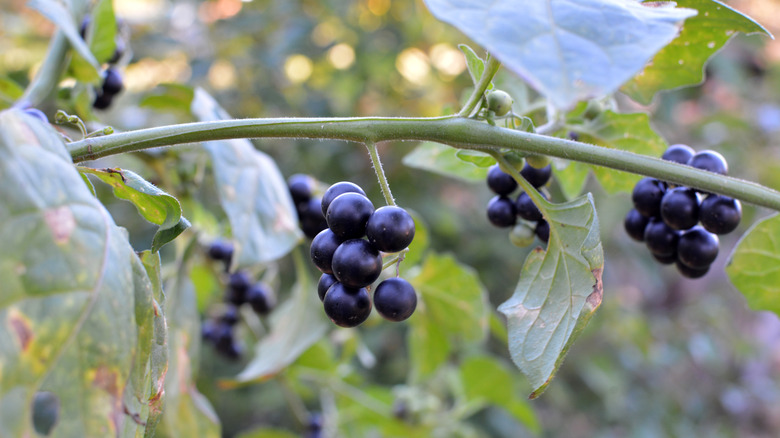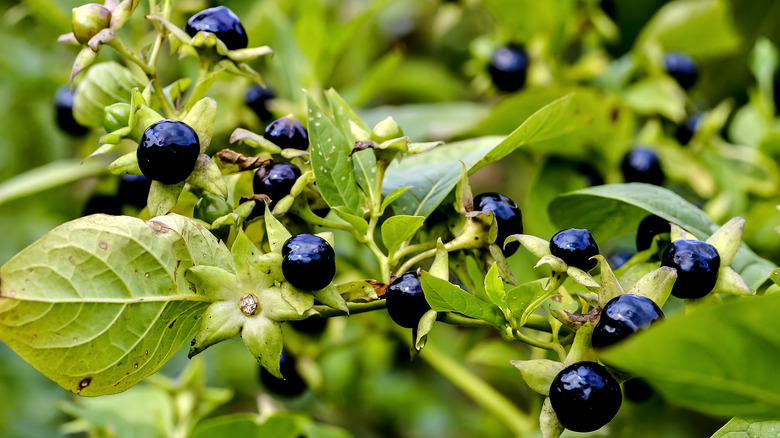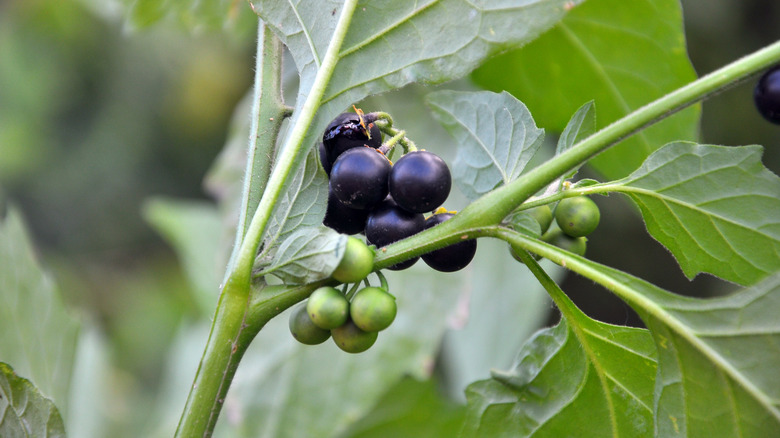How To Spot The Difference Between Black Nightshade And Deadly Nightshade Plants
Being able to identify the weeds in your yard is an important skill, both so you can learn how best to get rid of them, and so you can keep your family and pets safe. This is especially vital if you live in an area where nightshade plants grow freely. Nightshade plants are widely regarded as some of the deadliest you could ever stumble upon and to run in the opposite direction if you ever do. Black nightshade berries are safe enough to eat, though not likely worth the risk of poisoning yourself. Being able to tell them apart from their poisonous deadly nightshade sister is crucial.
Nightshade is a group of plants that belong to the family Solanaceae. The nightshades include common garden vegetables like tomatoes and potatoes, but they are also infamous throughout history for a more sinister reason: some of them are extremely poisonous. The deadly nightshade, formally known as Atropa belladonna, is one of the dangerous members of the bunch with its leaves and berries declared as lethal. Black nightshade (Solanum nigrum) berries, however, are safe to eat while its leaves are safe when cooked and toxic raw. In either case, this probably isn't a plant you want growing in your yard.
The way the berries grow will tell you which is which
There are two main ways to tell apart black nightshade from deadly nightshade. Take note of the way that the berries grow. Deadly nightshade berries grow individually on the stalk. However, black nightshade berries grow in clusters. This is the most surefire way to differentiate between the two species.
Another foolproof way to do so is by taking a good gander at the flowers. Deadly nightshade plants bloom brilliant purple flowers with green sepals that are hard to miss. On the other hand, black nightshades grow white flowers. Pair these facts with the way their berries grow and you'll be able to know which is which in no time.
For both plants, even the technically edible black nightshade, make sure you stay far away from the unripe berries as these are very toxic. Only the ripe, purple-black berries of black nightshade are safe. The leaves of both plants are also poisonous (though the leaves of black nightshade are safe to eat when cooked because heat denatures the poisonous compounds).
Black nightshade isn't a plant you want around the house
Just because ripe black nightshade berries are edible doesn't mean that they can't pose a threat to your kids or even your pets who don't know any better. The most dangerous part of the plant is the unripe berries which contain the highest concentration of solanine, the poisonous compound. Its leaves are also toxic and guess who nibbles on leaves from time to time — your dogs and cats. Little kids are also susceptible to the enticing berries. Just one unripe black nightshade berry contains enough poison to be fatal to a child.
Aside from the safety issues, letting black nightshade take root in your garden would be disastrous for the other plants who call it home. Nightshades are considered a weed in many parts of the world because of their aggressive nature. They could out-compete your vegetables, fruits, and other landscape plants and hoard all the nutrients. Identifying it is the first key step to keeping the dangerous black nightshade out of your garden and away from curious children or pets.


